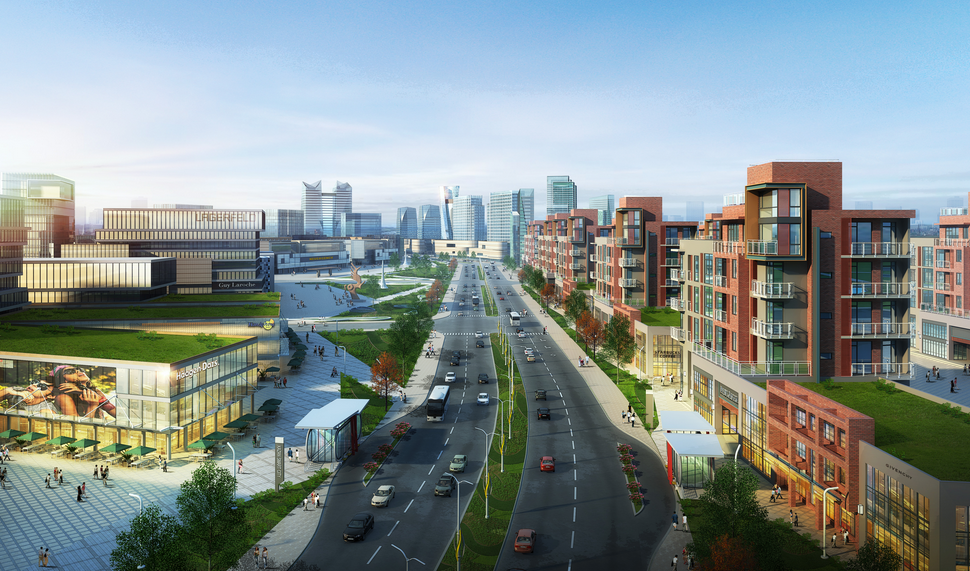66
Lily Bui, Massachusetts Institute of Technology, USA

In 1950, the late science fiction author Ray Bradbury published a short story called “There Will Come Soft Rains.” It describes an automated house in the post-apocalyse whose appliances continue to perform their functions despite the owners’ absence. These appliances are responsive, automated, programmable, networked — not unlike the connected devices we have come to characterize, in today’s lexicon, as the Internet of Things (IoT), referring to a proposed technological scenario in which everyday objects are connected to the Internet and are able to send and receive data. As an industry that expects to grow to $7.1 trillion by 2020, IoT is changing the way that we conceptualize the spaces around us at various scales: our bodies, our households, our neighborhoods, even our cities. At the city level, IoT articulates itself most clearly in “smart city” rhetoric, which endorses the use of sensors and data feedback loops to reveal aspects of the city’s performance to key authorities. Imagine individuals not only able to control appliances in the home remotely, but cities likewise able to control utilities, traffic, and energy consumption remotely. At first blush, these capabilities may sound convenient and pragmatic, but they are no less deserving of critique and caution. The most provocative critique about the the first smart city designs — i.e., SongDo, Korea (Cisco); Masdar City, UAE (Siemens); and PlanIT Valley, Portugal (IBM) — could also be made about Bradbury’s futuristic house: they are are utopian, generic, and devoid of human life.
But the future doesn’t have to be this way. It can be designed with people in mind first, not just technology. Unlike the first corporate conceptualizations of smart cities, an emergent ‘image of the smart city’ is one scaffolded by philosophies of open data, civic engagement, and collaboration.
In 2010 to 2011, a series of major earthquakes destroyed over 1,800 commercial buildings in the central business district of Christchurch, New Zealand. Two years after the initial earthquake, the city began to rebuild. A core part of the new infrastructure would be a “carpet of sensors…to monitor everything from noise levels to water use in realtime at a granular level” deployed and managed by the SensingCity initiative. This initiative foregrounds a larger effort for Christchurch to become a living laboratory to better understand how technology such as big data, the internet of everything, low-cost sensors, and pervasive computing can mediate sustainable urban environments. Not only that, SensingCity aims to make all data open and publicly accessible in a “datastore” where it can be used by city officials, citizens, and industry alike. The sensor networks in Christchurch’s business district will eventually monitor a slew of environmental factors that impact urban life. For instance, SensingCity is receiving support from another New Zealand-based organization called Callagan Innovation to use its air sensor network toward investigating the health impacts of air pollution. SensingCity is one of the first open data smart cities in the world, dedicated to values of transparency and accountability; supporting social and commercial value for data; and civic engagement with data. It is an initiative involving stakeholders at various levels, from the average citizen to industry partners, regional universities, and government.
Chicago’s Array of Things, led by the Urban Center for Computation of Data and Argonne National Laboratory, also endeavors to apply this model. The AoT (a clever play on IoT) project aims to equip city blocks with environmental sensor nodes that can report data back in real time, informing residents and municipal employees about the city’s performance. The nodes are going to be plainly visible so passersby are aware of their location and modular so that they can be adjusted as the technology itself evolves. The data itself will be available to the public and accessible through web and mobile portals. To address the issue of privacy and ethics, there is a data privacy committee activey vetting sensor data streams to ensure that any personally identifiable information is protected. The project’s conceptualization was not restricted to any one group but involved conversations among municipal government, scientists, residents in Chicago, and members of the Chicago civic hacking community. This inclusive approach to planning the project distinguishes AoT from many other smart city initiatives. People who live in Chicago have a stake in the planning process of the project, and the technology is designed to better serve those people.
The increase in mobile sensing applications and wearable technology also challenges notions of fixed sensing networks. Mobile devices and wearables that people carry with them on an everyday basis can also be used to collect data about the environment and public health. For example, NoiseTube and EveryAware’s WideNoise are both citizen science applications that enable people with mobile phones to log and map levels of noise pollution. This information would not only be compelling from a research perspective but also an urban planning one. Similarly, wearables like the Clarity sensor and the AirBeam log and map citizen-collected data about air pollution. Citizens also seem open to hosting local sensor nodes to assist with gathering environmental data, as seen with the Air Quality Egg project and the Data Canvas: Sense Your City project. Some established, fixed sensor networks (e.g. weather stations) managed by the city may not collect data with as much spatial resolution as one might need; mobile sensors mediated by citizens could be one method used to groundtruth existing data or ascertain higher spatial granularity. In any case, data collection is already happening at the civic level, enabled by technologies that have already penetrated urban populations. Many of these projects are designed for public engagement with environmental data, but there may also be a place for citizen-collected data toward urban planning.
In an essay called “What is a city?” Lewis Mumford writes, “[T]he physical organization of a city, its industries and its markets, its lines of communication and its traffic, must be subservient to its social needs.” I propose Mumford’s vision in place of Bradbury’s. There is no such thing as a smart city without its citizens to imbue it with sense and spirit.
References
Lynch, Kevin. The Image of the City. Harvard-MIT Joint Center for Urban Studies, MIT Press, 1960.
Mumford, Lewis. “What is a city?” Architectural Record, 1937.
Townsend, Anthony M. Smart cities: big data, civic hackers, and the quest for a new utopia. WW Norton & Company, 2013.
Poole, Steven.“The Truth About Smart Cities: ‘In the End, They Will Destroy Democracy.’” The Guardian. Published December 14, 2014. Accessed 4 March 2015.
Author Biography
Lily Bui is a researcher and M.S. candidate for MIT’s Comparative Media Studies program. She is also a research assistant at ArchiMedia, a writing and rhetoric lab that explores various aspects of science communications. Previously, she worked as a STEM Story Project Associate at the Public Radio Exchange (PRX) and the Executive Editor at SciStarter, PLOS CitizenSci, and Discover Magazine’s Citizen Science Salon. In past lives, she helped produce the radio show Re:sound for the Third Coast International Audio Festival out of WBEZ Chicago; worked on Capitol Hill in Washington, D.C.; served in AmeriCorps in Montgomery County, Maryland; worked for a New York Times bestselling ghostwriter; and performed as a touring musician. In her spare time, she tinkers with electronics and thinks of cheesy science puns.
Contact email: lilybui@mit.edu

